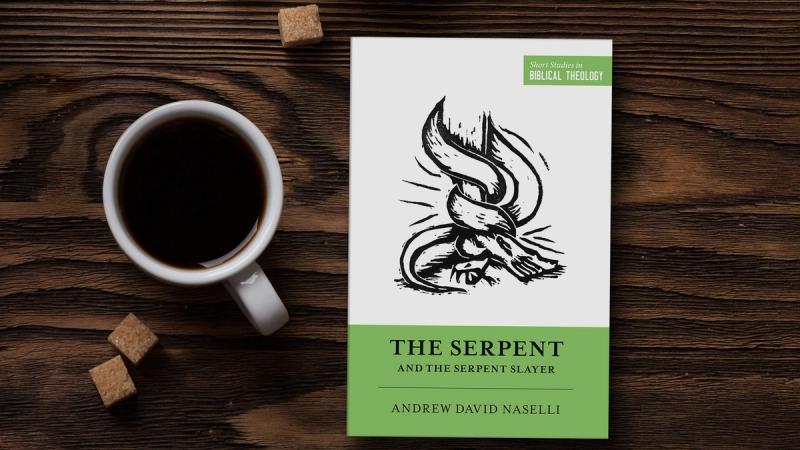Interest in the paranormal consistently increases and continues to spread each year. With it, interest in angels, demons, and Satan has increased dramatically. We live in a time where a few years ago, the word of the year for the Oxford dictionary was “post-truth” used by the dictionary to describe how people had moved past truth. The ironic thing about the Oxford dictionary’s choice of that word is that interest in the spiritual and supernatural has never been greater than it is today. Hardwired into each person is the desire to know the truth because God planted such a desire in the human heart (Ecclesiastes 3:11).
Knowing the Themes of Scripture is Important
Tracing the themes of Scripture is vital for the Christian who desires to enrich their understanding of the biblical story. The Bible is not a collection of myths and fairytales, nor is it a running commentary on current events. The Bible is concerned with something far greater: to demonstrate through the real-life characters and events of Scripture how the Lord is not disinterested but interested in humanity. Tracing the themes of Scripture has an adding benefit, and that is it tells the story of God through the events and lives it tells Bible readers about.
In his new book, The Serpent and the Serpent Slayer, Dr. Andrew Davis Naselli brilliantly tells the serpent’s story in Genesis 3 to the serpent slayer in the Lord Jesus in Revelation. As he traces this vital theme, he shows the unity of the Bible and how it is centered on the person and work of Jesus.
The First Gospel and the Person and Work of Jesus
Naselli begins in the Garden with the deceiving snake, Satan. As he unpacks Genesis three, he gets to what is known as the “Protoevangelium,” the first gospel. Naselli (40) rightly says, “The rest of the Bible’s storyline traces the ongoing battle between the snake’s offspring and the woman’s offspring.”
Jesus refers to Genesis 3:15 in John 3:14-16. Christ’s reference in John 3:14-16 takes Bible readers back to Numbers 21:8-9. The details of the events are remarkable in that the snakes were the result of sin. We could even say that the snakes were the perfect expression of sin because it was a serpent who tempted Adam and Eve in the Garden, bringing sin into the world through Adam’s disobedience. Our very natures have been polluted by the serpent’s venom (Romans 3:10).
Naselli says:
Moses lifted up the bronze snake on a military standard, and the Son of Man was lifted up on a cross (John 8:28; 12:32-34). Like the bronze snake, Jesus bore the curse in the place of people who deserve it (2 Corinthians 5:21; Galatians 3:13; 1 Peter 2:24). Unlike the bronze snake, Jesus has life in himself (John 1:4; 5:26). (78)
With all the animals in the world to choose from, the Lord choose the perfect representation—the serpent. On the cross, our Lord took the sins of the world upon himself as symbolized by the writhing serpent.
Moses raised the serpent high in the camp, and all the dying Israelites had to do was look to the pole and be saved. No matter how horribly they were bitten, no matter how bitter or sick they were, the opportunity for salvation was there. The beauty of Genesis 3:15 is that the most degraded and miserable sinner who looks to Christ alone for salvation will be saved. Out of the chaos, God answers that He is incredibly interested in His creation. Out of chaos, God brings forth His grace and mercy. This great grace had its origins and image in the first gospel in the garden. There was hope in paradise lost.
A Very Helpful Study
From considering the story of the serpent and tracing this theme throughout Scripture to considering how Jesus deals with the serpent, The Serpent and the Serpent Slayer is a beneficial study. Further, The Short Studies in Biblical Theology is a very helpful and beneficial series covering a broad array of biblical themes and topics for Bible readers to read and utilize in their biblical studies. Wherever you are at in your study of Scripture, and no matter your theological education, you can find help and learn from The Serpent and the Serpent Slayer. Dr. Naselli’s scholarship is not only world-class, but he is also an excellent communicator of God’s truth. Read The Serpent and the Serpent Slayer and discover the answer to the ultimate story—the struggle between the offspring of God and the offspring of the serpent. In this fantastic addition to The Short Studies of Biblical Theology series, you’ll find yourself captivated in the unifying narrative of Scripture in the Lord Jesus and His ultimate victory over the devouring dragon, Satan, in Revelation.
Dave Jenkins (MDiv, Liberty Baptist Theological Seminary) is the executive director of Servants of Grace Ministries, the executive editor of Theology for Life Magazine, and the host of the Equipping You in Grace Podcast and Warriors of Grace Podcast. You can follow him on Twitter at @davejjenkins, find him on Facebook at Dave Jenkins SOG, Instagram, or read more of his writing at Servants of Grace.



